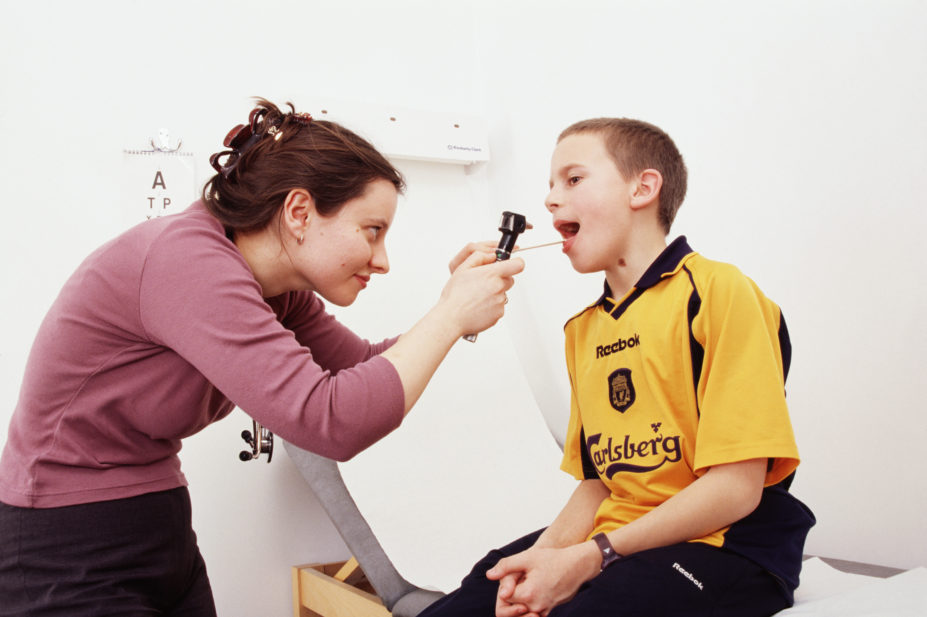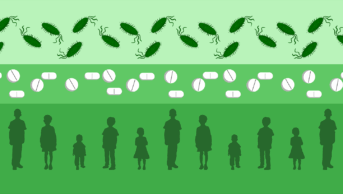
Science Photo Library
Patients have a right to expect care that meets their needs and is convenient to access. These rights are protected under the NHS Constitution in England; however, in my trust’s experience, this is not always the case when it comes to children and their medicines[1].
I am chief pharmacist at Birmingham Women’s and Children’s NHS Trust and we have one of the highest volumes of paediatric outpatient contacts in the country, with 242,619 virtual and face-to-face appointments from April 2020 to March 2021, according to hospital episode statistics data. Some 24% of those contacts resulted in a medicine being prescribed and dispensed by the outpatient pharmacy at the children’s site (data on file).
In common with all NHS trusts, we follow national guidance on funding and prescribing for specialist medicines, with prescribing of non-urgent, less specialised drugs directed to the primary care provider[2]. This guidance states that clinical responsibility for prescribing should “sit with those professionals who are in the best position and appropriately skilled to deliver care which meets the needs of the patient”. Often, this will be the GP as they are the person involved in the patient’s long-term overall care.
This local support is important for children and their families, particularly as many parents know the difficulties of travelling long distances with a sick child to hospital appointments. GPs have a more holistic view of healthcare and repeat prescribing of long-term medicines is a core function.
However, responses from GP practices to prescribing requests are repeatedly varied and inconsistent; we often receive what is termed locally as a ‘decline to prescribe’. This results in NHS trusts having to take responsibility for the supply of medication, which is both inconvenient for the patient and resource intensive for the hospital trust.
From April 2019 to April 2020, Birmingham Women’s and Children’s Trust supplied 13,489 medicines following a ‘decline to prescribe’ request from GPs. Some were valid owing to monitoring requirements, but a sample of 410 GP ‘decline to prescribe’ forms included 51 prescription requests for drugs commonly prescribed in primary care, such as omeprazole or lansoprazole, with 36% of GPs giving the reason ‘unlicensed’ for the required treatment and most giving no reason at all (data on file). At the heart of each one of these requests are the patients, carers and families who are trying to navigate the NHS to access diagnoses and treatment.
Carers do not care who the commissioner is or who should prescribe; they simply want access to the right medicine at the right time
Carers can spend considerable time attempting to source the right medication for their child and experience distress because they have been unable to obtain medicines easily. They do not care who the commissioner is or who should prescribe; they simply want access to the right medicine at the right time.
Cost concerns
The redirection of prescribing back to hospitals often seems predicated not on what is best for the patient but what carries the lowest risk — financial and clinical — for the prescriber.
There is less available evidence for the use of medicines in children in comparison with adults and, as a result, we find that many GPs are concerned about unlicensed and off-label use, owing to the associated risks of potential harm and fear of litigation.
However, the British National Formulary for Children (BNFC), first published in 2005, changed this[3]. It brings together published evidence, case studies, professional expertise and historical safety data to give a rationale for the safe prescribing of many drugs which do not hold a product licence for use in children. And NHS guidance in England is clear that the inclusion of dosage guidance in the BNFC “provides a suitable evidence base” for unlicensed medicines or those being used outside of their product licence[2]. Despite this, many GPs express concern about their prescribing competency for children outside of the common antibiotics and pain relief, perhaps partly owing to a lack of training . A survey conducted by Isa et al. in 2009 described how GP trainees felt underprepared for prescribing in children, with a third having not received any training in paediatrics at all prior to entering the GP training scheme[4].
Often, GPs are not familiar with the treatment that is being recommended or consider the specialist more ‘familiar’ with the patient. This may be compounded by unclear information from the specialist in discharge information about the rationale for prescribing.
For patients with chronic conditions, the specialist may see the patient more frequently than their GP, creating the belief that the specialist ‘knows’ the patient better. Despite the use of shared care agreements to support good prescribing, some GPs have become resentful, perceiving the requests from specialist centres as additional and unfunded workload.
Secondary care perspective
Many secondary care prescribers spend significant amounts of time contacting GPs to discuss safety concerns so that patients can receive medicines locally.
They perceive a lack of consistency and expertise in primary care as factors that must be considered for children; for example, prescribing phenobarbital liquid with high alcohol content[5]. The excellent work done by primary care medicines management teams in reducing use of pharmaceutical specials and implementing more consistent product choices, can sometimes become a blunt tool that can cause safety issues for children who require specific formulations.
Tensions between secondary care and commissioners can also emerge. Our trust was told by one clinical commissioning group to book patients for appointments for repeat prescriptions because they would not fund the medicine as homecare, which results in frustration for the family and reduced capacity for other potentially more urgent cases within the trust. Supply by NHS trusts is challenging as repeat prescribing systems are under-developed and there is no specific funding available to cover delivery of medicines.
Some NHS trusts have developed specialised teams to manage prescribing, homecare supplies and financial claims; however, these teams can spend a significant amount of resource in ensuring that patients receive the right medicine at the right time.
Community pharmacy perspective
The community pharmacist may be faced with paediatric prescriptions for medicines that are rarely used or that may require a special formulation. They may be unfamiliar with the medicine and lack access to a clinic letter for additional information and clarification. Similar to GP trainees, pharmacists may not have had much specialist training in paediatrics, and therefore have a lack of confidence in their clinical knowledge and ability to answer queries. The original prescription may have come from a specialist centre that is not local, leading to further difficulties in who to seek advice from — the hospital pharmacy or patient’s consultant?
Commissioner perspective
Commissioning teams often hold the view that the expertise in managing some medicines is in secondary care; therefore, it is safer for the provider to manage the patient.
In addition, paediatrics department use medicines in the ‘specials’ category and medicines management teams have developed systems to mitigate the impact of high-cost specials on prescribing budgets. This means there is sometimes a perception that secondary care decisions are founded on a low evidence base and have less challenge than in primary care.
Potential solutions
All of these barriers are significant. However, I believe they are not insurmountable.
Simple interventions by Area Prescribing Committees, such as implementing the Neonatal and Paediatric Pharmacists Group (NPPG) recommendations on standardising liquid medicines would help improve safety and supply issues across the system[6].
Testing the use of the electronic prescription service in secondary care is underway, but there must be a wider focus on how this links with primary care. Electronic prescribing and medicines administration systems on hospital wards must push further towards ensuring these systems are accessible in outpatient clinics, with access to electronic prescription forms.
In terms of shared information, appropriate paediatric information needs to be integrated into the local health and care record pilots and shared care records. Integrated care systems in England are also implementing improved information flow regarding patients discharged from in-patient stays, such as the discharge medicines service. Could these ensure that initiation or changes to medication are communicated more clearly?
We need to narrow the knowledge gap between primary and secondary care when it comes to the care of children and young people. The new primary care networks in England have an opportunity to grow expertise in paediatric prescribing in primary care teams — in particular, education and training for primary care pharmacists in paediatric prescribing could be signposted from NPPG and specialist centres.
Developing ‘community paediatric specialists’ could act as outreach for specialist centres as part of virtual clinics based in community centres and GP practices.
Summary
There is no single solution that addresses the challenges for prescribing and supplying medicines for children and young people, and we have to accept that not all medicines can or should be prescribed in primary care. Nevertheless, paediatrics must not be overlooked in developing integrated care systems, and every area must ensure they have well-defined structures to support safe, patient-centred prescribing and supply of medicines for this most vulnerable patient group.
- 1The NHS Constitution for England. UK government. 2021.https://www.gov.uk/government/publications/the-nhs-constitution-for-england/the-nhs-constitution-for-england (accessed Sep 2021).
- 2Responsibility for prescribing between primary & secondary/tertiary care. NHS England. 2018.https://www.england.nhs.uk/wp-content/uploads/2018/03/responsibility-prescribing-between-primary-secondary-care-v2.pdf (accessed Sep 2021).
- 3Marcovitch H. Safer prescribing for children. BMJ 2005;331:646–7. doi:10.1136/bmj.331.7518.646
- 4Isa NM, Taylor MW, Helms PJ, et al. How well are general practice trainees prepared for paediatric prescribing? British Journal of Clinical Pharmacology 2009;67:370–3. doi:10.1111/j.1365-2125.2008.03341.x
- 5Tomlin S. Paediatric medicine — prescribing for children. GP online. 2009.https://www.gponline.com/paediatric-medicine-prescribing-children/article/894634 (accessed Sep 2021).
- 6Choosing an oral liquid medicine for children. Neonatal and Paediatric Pharmacists Group. 2020.http://nppg.org.uk/wp-content/uploads/2020/12/Position-Statement-Liquid-Choice-V1-November-2020.pdf (accessed Sep 2021).


